Solitaires Team • Updated February 27, 2024
Solitaire is a classic card game that has been enjoyed by millions of people around the world for generations. It’s a game that can be played alone, making it the perfect pastime for those who want to relax and unwind. The game is won when all cards are successfully placed in order by suit from ace to king onto the foundation piles. In this guide, we’ll show you how to play Solitaire and provide some tips on how to win.
It should be noted that classic Solitaire, also known as Klondike Solitaire, has two main variations: Solitaire Turn 1 (easier variant) and Solitaire Turn 3 (difficult variant). For fans of a true challenge, there is also the most difficult variation of Klondike – Hard Solitaire. Note that the 52-card layout remains the same in all three variations.
Let's take a look at the layout of Solitaire and its 4 main areas.
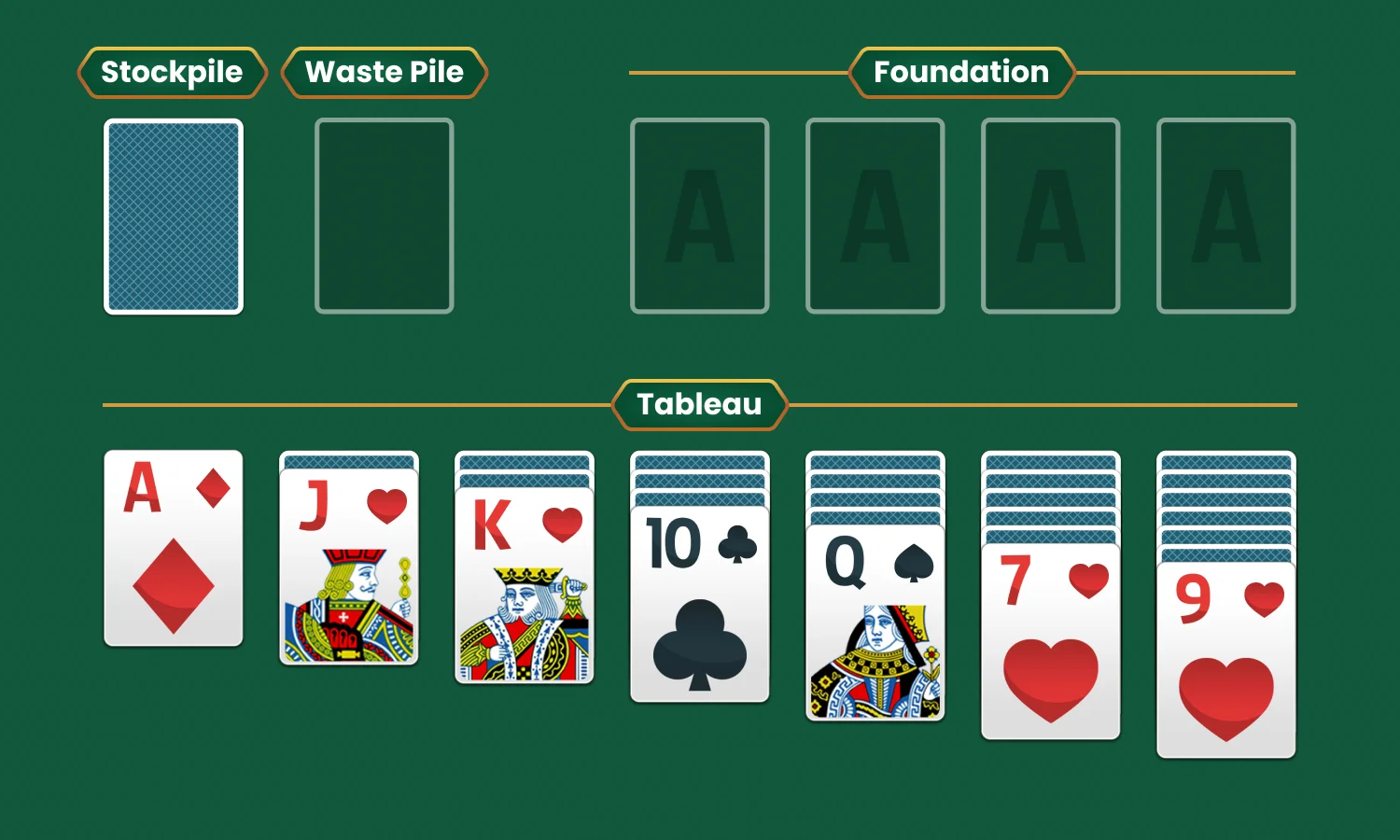
The tableau is the largest playing area where you make your main moves. It consistsof 28 cards organized in 7 columns, where the first column contains one card, the second column contains two cards, and so on. Only the top card in each of the columns is face up. From this area, you can move any of the face-up cards to either the foundation or to another column on the tableau.
The stockpile is a stack of cards that contains the remaining 24 cards from the deck, which are placed face down. When you need to, you can draw cards from the stockpile and move them to the waste pile.
The waste pile is created by taking cards from the stockpile and placing them face up. You can move cards from the waste pile to either the tableau or directly to the foundation, but only the top card from the waste pile can be moved. If you cannot currently use the top card from the waste pile, you may continue to draw cards from the stockpile and add them face up onto the waste pile.
At the top right of the playing area, you will find four foundation piles. These are used to build sequences of cards in ascending order by suit from the ace to the king. The game is over when all cards from all areas are set here in four piles in ascending order by suit.
When you play the digital version of Solitaire, you don't need to lay out the cards yourself; it is done automatically. If you want to play Solitaire with a physical deck of cards, check out our article on how to set up Solitaire.
The game’s objective is to build four sequences of cards, one for each suit (hearts, clubs, spades, and diamonds), in ascending order, each starting with the ace and ending with the king. To do this, you must move cards from the tableau piles and the waste pile to the foundation according to certain rules.
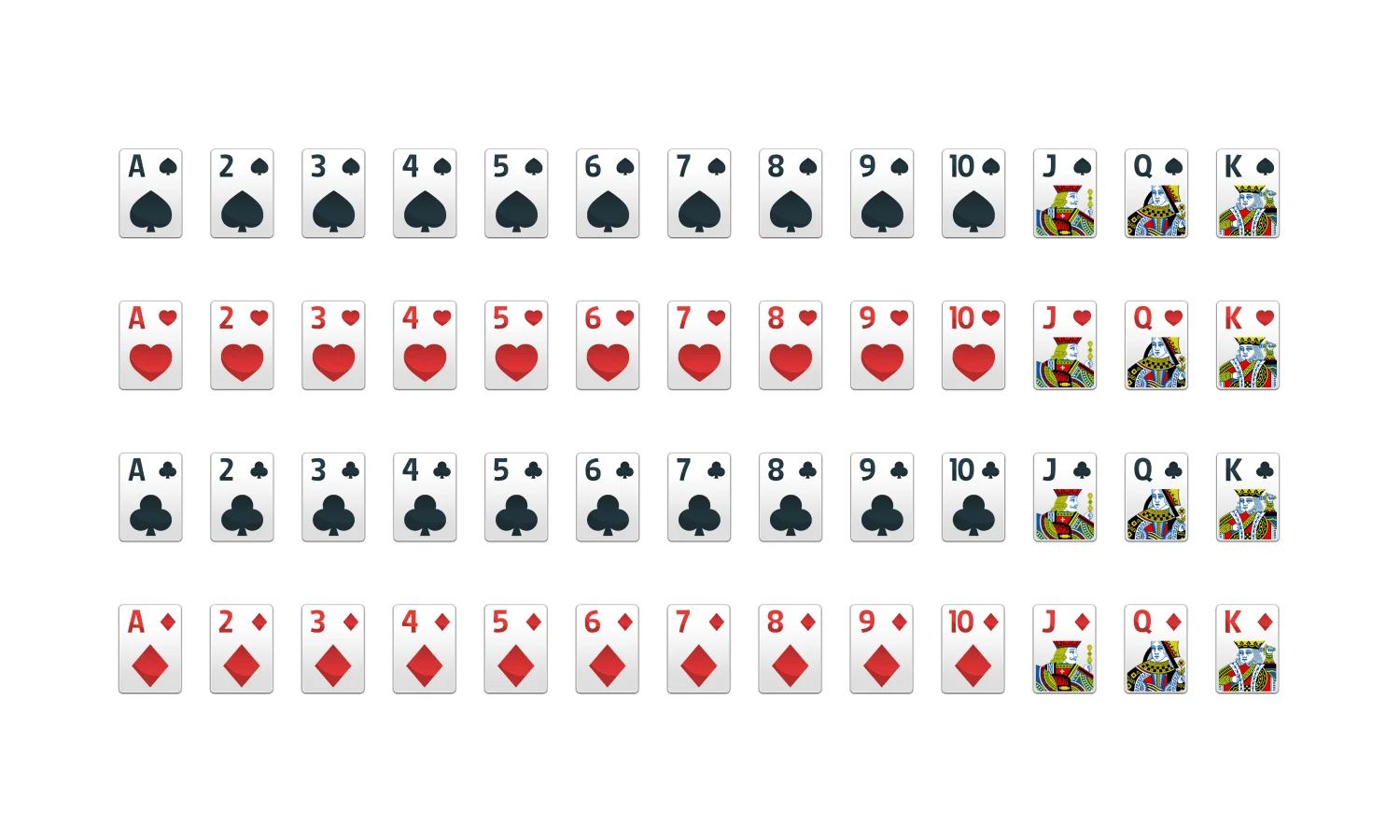
To win Solitaire and place all the cards in the foundation pile in ascending order you need to reveal all the face-down cards. This is achieved by moving the cards around the tableau. Once a face-down card in the tableau column is uncovered, it is automatically flipped face-up. However, moving cards can only be done according to certain rules. Solitaire rules are very straightforward and you will master them quickly.
Cards can be placed on top of each other in the foundation piles, but they must be of the same suit and in ascending order from the ace to the king. Only the top cards from the tableau columns can be moved to the foundation. The top card from the waste pile can also be moved directly to the foundation if it is of the right suit and rank to be placed.
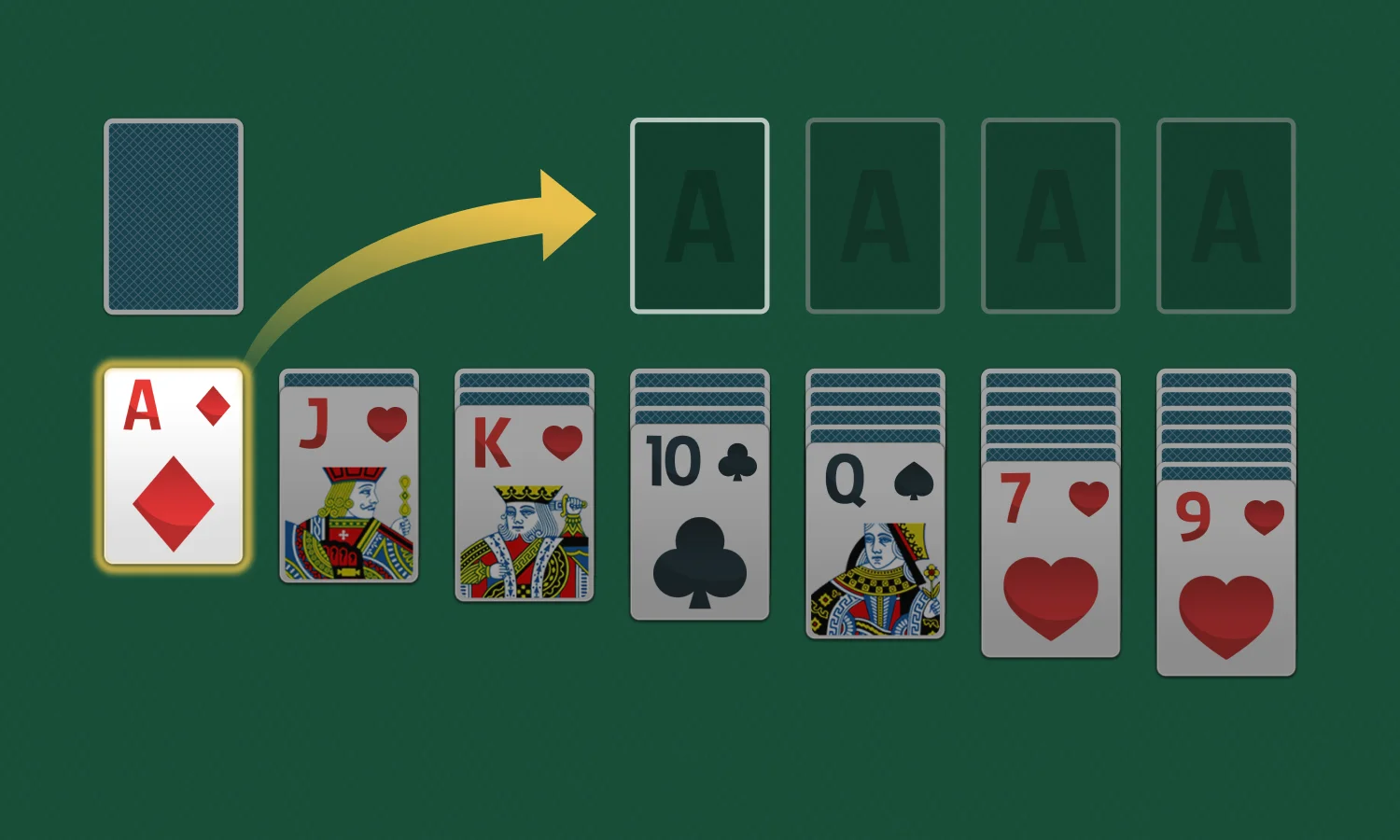
You can take any card that is face up and move it either to a foundation pile or to another pile of the seven columns on the tableau. However, you may only place a card on top of another card in the tableau area if it is of the opposite color and the next higher rank. For example, you can put the red 9 on top of the black 10, or the black queen on top of the red king. You can also move entire sequences of cards from one column to another provided that the cards in this sequence alternate in color (black, red, black, red, etc.) and are lined up in descending order. The sequence can start from any card, not necessarily from the king.
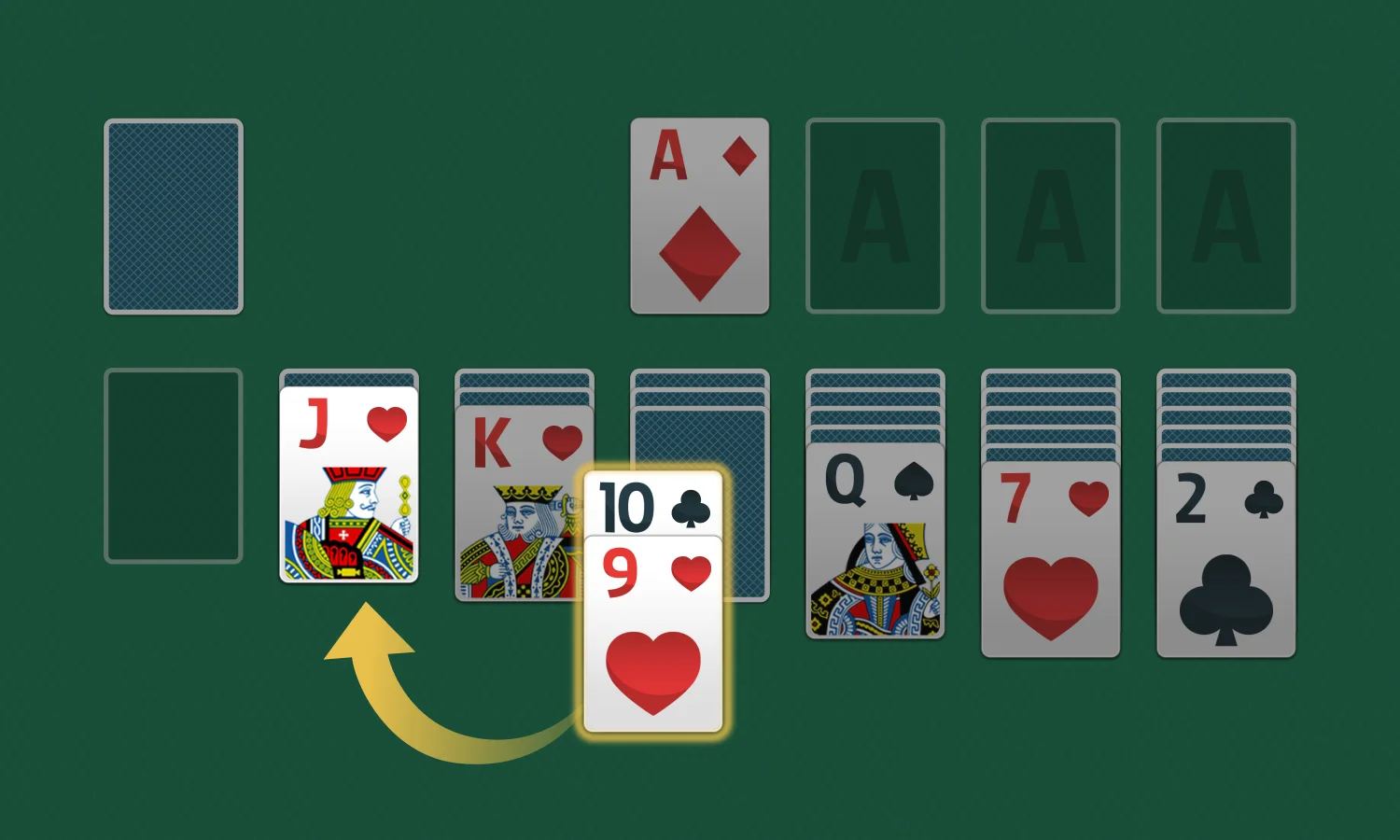
If you find yourself with no available moves on the tableau, you have the option to draw a card from the stockpile. You can only draw one card at a time in the Solitaire Turn 1 version. In the Solitaire Turn 3 version, you can draw three cards at a time; however, you can only use the top card of these 3 cards. If you cannot use the top card from the waste pile at this point in the game, you may continue to draw cards from the stockpile. When you run out of moves, you may reshuffle the stockpile and continue playing.
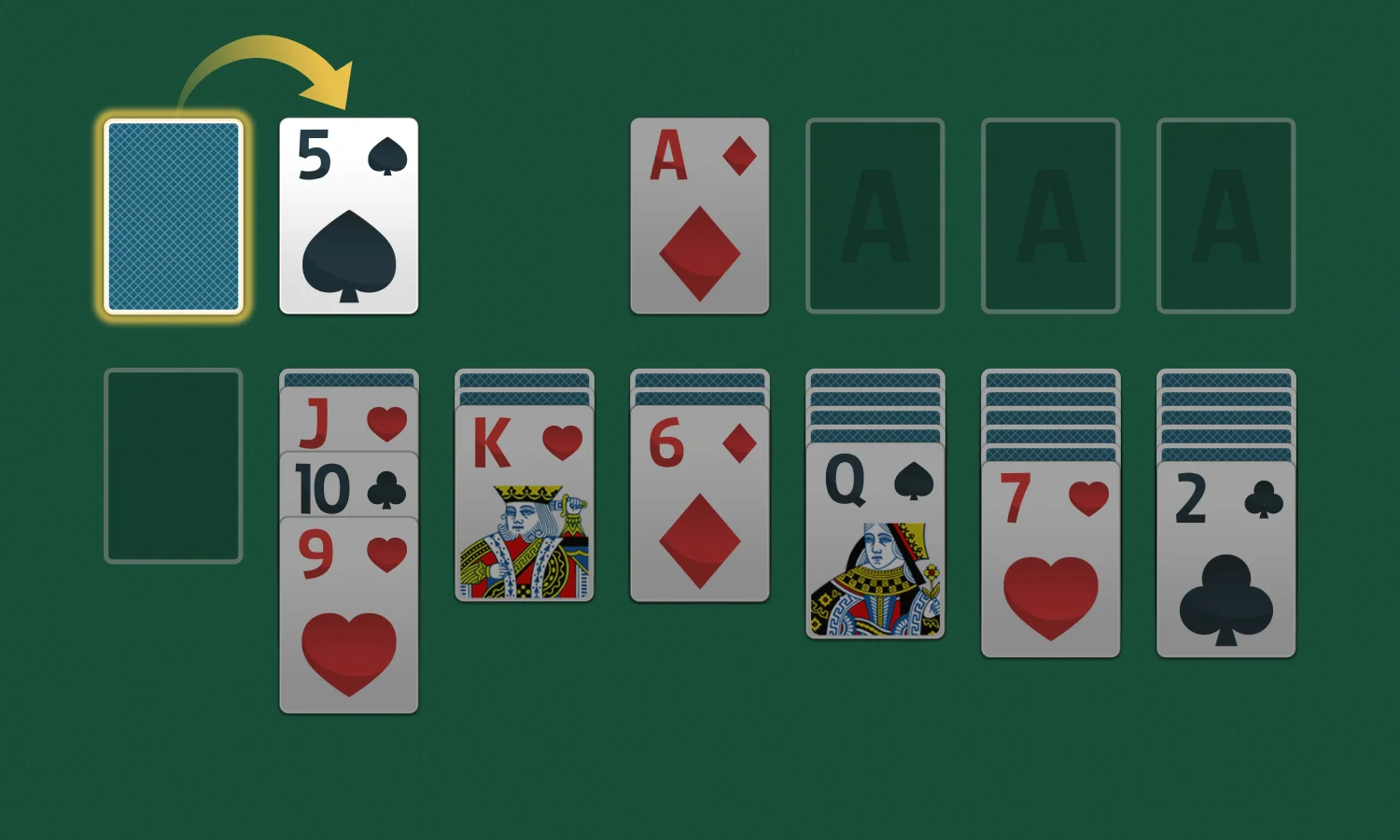
When you remove all cards from any column on the tableau, you can fill that empty space with either a single king or a descending sequence of cards with alternating colors starting with a king.
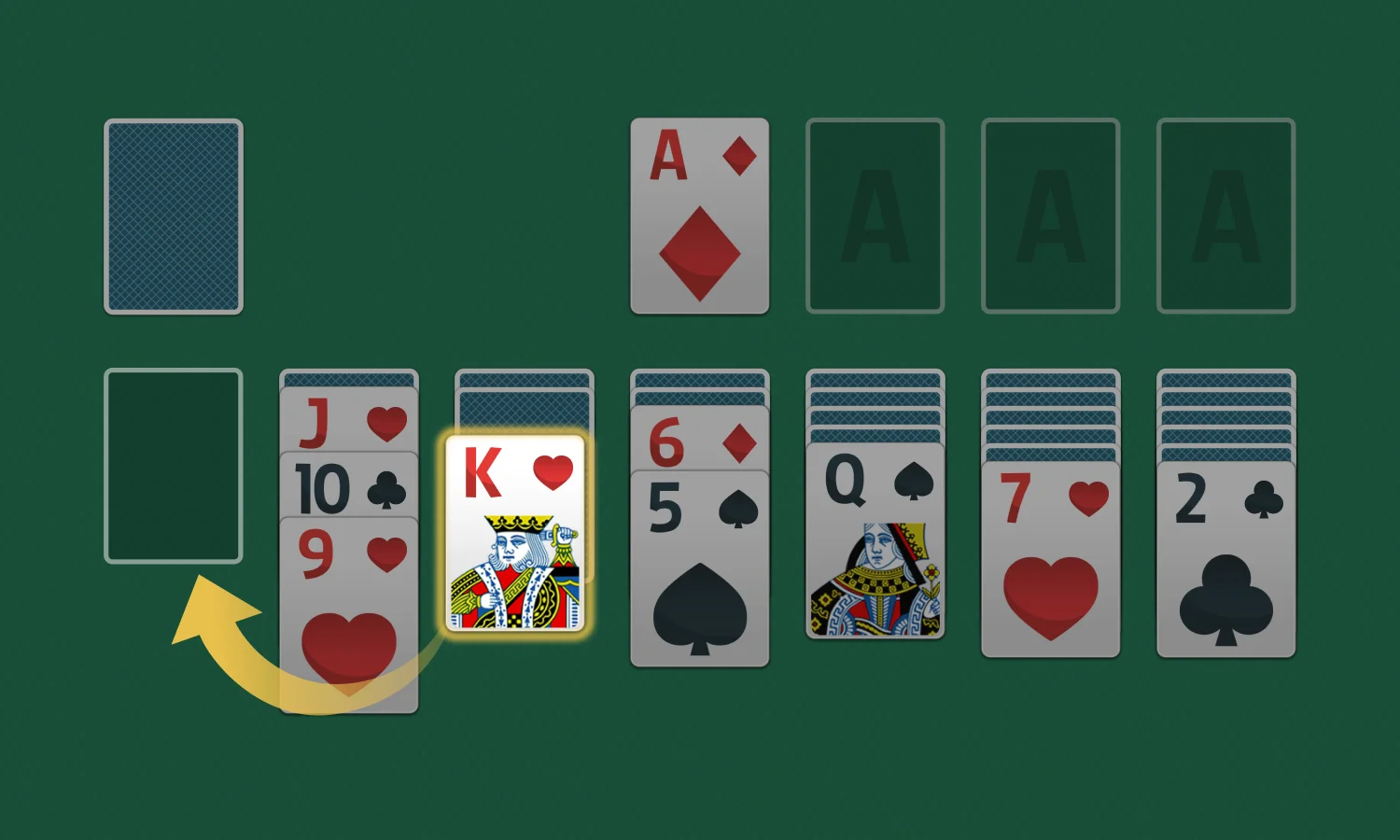
The game is won when the entire deck of cards is successfully placed in order by suit from ace to king onto the foundation piles. Now that you know the rules of Solitaire, why don't you give it a try? Start with the simpler version of SolitaireTurn 1 or give yourself a challenge with Solitaire Turn 3.
Here are some strategies to help you understand how to play Solitaire in order to increase your chances of winning the game:
Try to expose the face down cards as quickly as possible. This will give you more options and flexibility in your moves.
Whenever possible, try to keep some columns empty. Empty columns serve as spaces for kings when you find them and can facilitate the creation and movement of card sequences.
Start building foundations as quickly as possible. This ensures that you free up space on the tableau and reduces the chance of getting stuck later in the game.
Many Solitaire games offer an "undo" option. Don't hesitate to use it if you make a move that doesn't work. Experiment with different sequences to find the best move.
The game requires skill and familiarity with the rules of Solitaire. Keep practicing to improve your strategies.
Remember that there is always a share of luck in Solitaire due to the way the cards are initially shuffled. However, these tips should increase your chances of success and help you learn how to play Solitaire like a master. Start playing on Solitaires.com now and good luck!